
Ranunculus repens, the creeping buttercup, is a flowering plant in the buttercup family Ranunculaceae, native to Europe, Asia and northwestern Africa. It is also called creeping crowfoot and sitfast.

Agrostemma githago, the common corn-cockle is a herbaceous annual flowering plant in the pink and carnation family Caryophyllaceae.

Maianthemum racemosum, the treacleberry, feathery false lily of the valley, false Solomon's seal, Solomon's plume or false spikenard, is a species of flowering plant native to North America. It is a common, widespread plant with numerous common names and synonyms, known from every US state except Hawaii, and from every Canadian province and territory, as well as from Mexico.

Phyteuma is a genus of flowering plants in the family Campanulaceae, native to Europe and Morocco.

Cardamine hirsuta, commonly called hairy bittercress, is an annual or biennial species of plant in the family Brassicaceae, and is edible as a salad green. It is common in moist areas around the world.
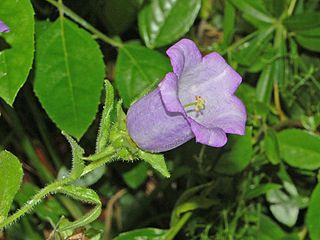
Campanula medium, common name Canterbury bells, is an annual or biennial flowering plant of the genus Campanula, belonging to the family Campanulaceae. In floriography, it represents gratitude, or faith and constancy.

Phyteuma orbiculare, common name round-headed rampion or Pride of Sussex, is a herbaceous perennial plant of the genus Phyteuma belonging to the family Campanulaceae.

Vinca major, with the common names bigleaf periwinkle, large periwinkle, greater periwinkle and blue periwinkle, is a species of flowering plant in the family Apocynaceae, native to the western Mediterranean. Growing to 25 cm (10 in) tall and spreading indefinitely, it is an evergreen perennial, frequently used in cultivation as groundcover.

Ligustrum vulgare is a species of Ligustrum native to central and southern Europe, north Africa and southwestern Asia, from Ireland and southwestern Sweden south to Morocco, and east to Poland and northwestern Iran.
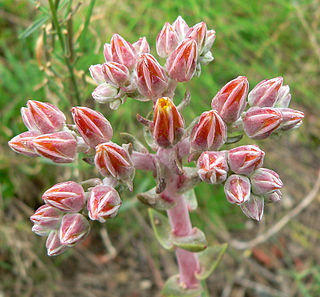
Dudleya palmeri is a species of succulent plant in the family Crassulaceae known by the common name Palmer's liveforever. This Dudleya is endemic to California where it grows along the coast. It is characterized by orange to red over yellow or pink flowers. It is a polyploid species that closely resembles Dudleya lanceolata but has a coastal habit, and hybridizes with Dudleya caespitosa and Dudleya cymosa.

Lysimachia vulgaris, the yellow loosestrife or garden loosestrife, is a species of herbaceous perennial flowering plant in the family Primulaceae. It was transferred to Myrsinoideae based on results of molecular phylogenetic research before being merged into the Primulaceae.

Calochortus amabilis is a species of the genus Calochortus in the family Liliaceae. It is also known by the common names Diogenes' lantern, yellow globe-tulip, golden globe-tulip, yellow globe lily, golden fairy lantern, golden lily-bell, Chinese lantern, and short lily.

Ozothamnus ferrugineus, commonly known as tree everlasting, is a member of the genus Ozothamnus, of the Asteraceae family – one of the largest families of flowering plants in Australia. Native to the Australian states of New South Wales, Victoria, South Australia, and Tasmania, it forms an erect shrub or small tree between 2 and 3 metres in height.
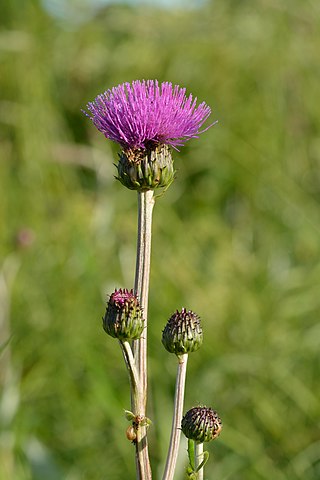
Cirsium heterophyllum, the melancholy thistle, is an erect spineless herbaceous perennial flowering plant in the family Asteraceae. It is native to Europe and western Asia, where it grows in upland meadows, grasslands, road verges and open woodland.
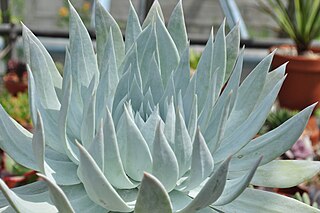
Dudleya brittonii, with the common names Britton's dudleya, Britton's liveforever and giant chalk dudleya, is a succulent plant in the family Crassulaceae. It is native to the coast of northern Baja California, Mexico. Both forms of the plant have yellow leaves on a clustered rosette atop a large reddish-purple peduncle. The white form of the plant has a chalky epicuticular wax that reflects light and reacts with water. The green form of the plant is more common and found throughout a wider range. It is among the largest of the Dudleya.
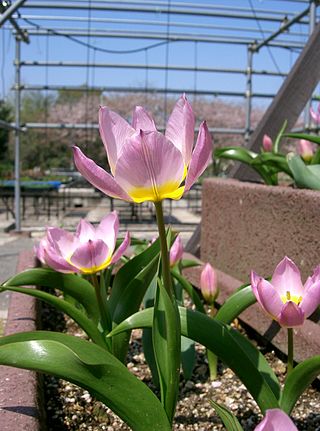
Tulipa saxatilis is a Greek and Turkish species of plant in the genus Tulipa of the family Liliaceae.
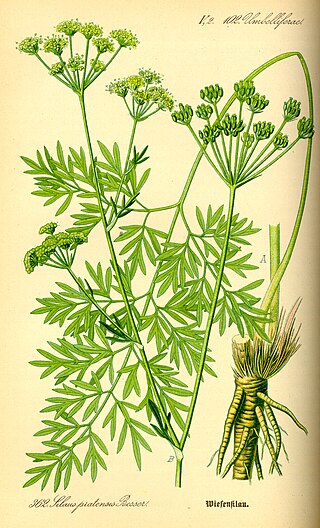
Silaum silaus, commonly known as pepper-saxifrage, is a perennial plant in the family Apiaceae (Umbelliferae) found across south-eastern, central, and western Europe, including the British Isles. It grows in damp grasslands on neutral soils.

Linum alpinum is a species of perennial plant belonging to the Linaceae family.

Carduus personata is a perennial herbaceous plant in the family Asteraceae.

Oenanthe silaifolia, narrow-leaved water-dropwort, is a flowering plant in the carrot family, which is native to Europe and adjacent parts of Asia and North Africa. It is an uncommon plant of water-meadows and wetlands.






















